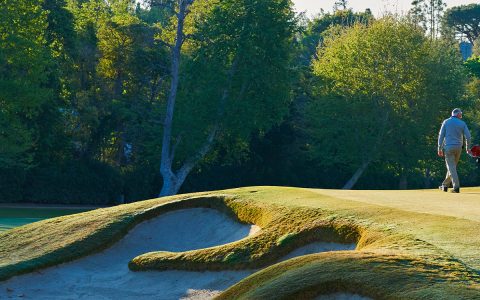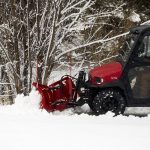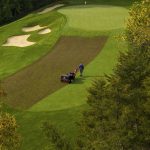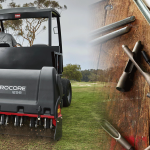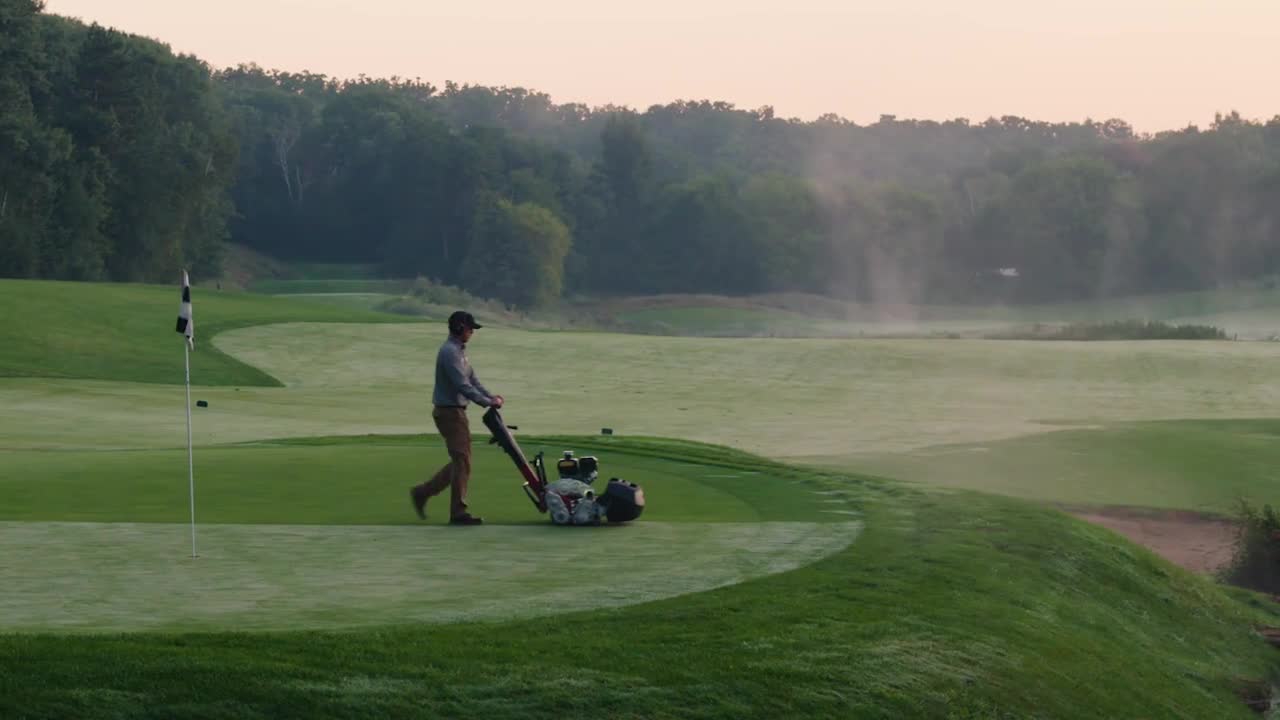With a large portion of the U.S. experiencing extreme drought conditions, were all looking for solutions. But for stressed turf with weak roots, this may not be the best time for core aeration. Before you core aerate, consider these important factors.
Core aeration can help you address several turf and soil issues at once. However, the process can also be stressful and damaging to your turf. So how do you know if your turf will be able to withstand the core aeration process without suffering quality issues after the fact?
The main factor is the density and depth of rooting, which allows turf to resist the pulling force of the tines and speeds the healing process.
Common Problems
Weakly rooted turf is susceptible to problems such as lifting where a section of turf is detached from the soil surface and lifted like a piece of carpet. Tufting around aeration holes is another problem that can be caused by weakly rooted turf.
Vigorously rooted turf stays tightly attached to the soil line and is better able to withstand the pulling forces of the tines.
Factors That Influence Rooting Quality
1. Soil texture in general, fine-textured clay soils support a less dense root system, while soils with a higher sand content support more vigorous and deeper rooting.
2. Soil compaction highly compacted soils support less rooting. Loose soils support more rooting.
3. Species Cool-season species (creeping bentgrass, annual bluegrass, Ky. bluegrass, perennial ryegrass, fescues) have more delicate and shallower root systems compared to warm-season species (bermudagrass, zoysiagrass, seashore paspalum). Annual bluegrass (Poa annua) is the most shallow rooted of the cool-season species.
4. Annual growth cycle stage cool-season species are most vigorously rooted in the spring and fall and most weakly rooted in midsummer. Warm-season species are most weakly rooted spring and fall and most vigorously rooted in summer.
5. Seasonal climate conditions hot midsummer conditions lead to shallow rooting in cool season species. Wet, cold spring conditions can also limit rooting.
6. Microclimate conditions poorly drained areas produce shallow rooted turf. Turf subjected to several hours of shade every day has less substantial rooting as well.
7. Watering practices over-watering which keeps soils wet leads to less vigorous and shallow rooting. Moisture stress caused by too little water can also lead to weak rooting.
8. Fertility practices over-fertilizing causes excessive top growth in turf, leading to less vigorous and shallow rooting. Under-fertilizing can also lead to weak rooting
9. Height of cut depth of rooting is directly proportional to height of cut. The lower the height of cut the shallower the rooting.
10. Thatch Turf with a deeper layer of thatch is generally more shallow rooted and more susceptible to lifting or tearing from aerification.
Any factor or combination of factors that reduce the depth and vigor of a turfs root system will make it more susceptible to aerification damage. For example, annual bluegrass on compacted, fine-textured soils aerated in the early fall following a hot summer is most prone to damage. A mixed annual bluegrass or creeping bentgrass turf would be next in order of susceptibility.
Turf Density
Another primary factor influencing a turfs ability to withstand the stress of core aerification is turf density. Vigorously growing turf with a high plant density and a tighter canopy is generally less susceptible to aeration damage. Factors 1, 2, 4, 5, 6, 7 and 10 above can have similar affects on density as they have on rooting.
Learn More
For more information about aeration strategies and the best Toro equipment for the job, visit toro.com/cultivation.


